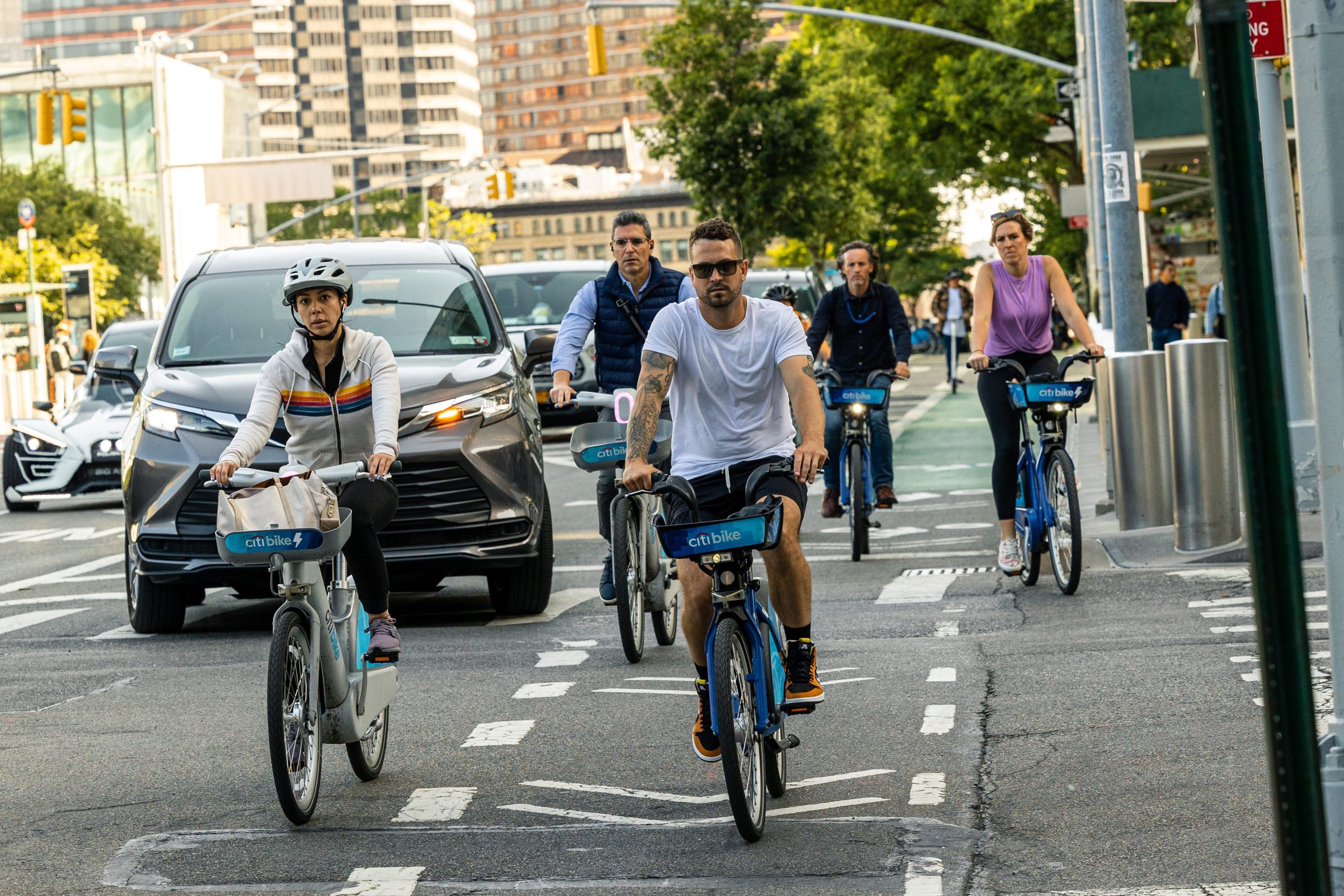
Only a couple of hundred yards from the rusting remains of the 1964 World's Fair, Mayor Michael Bloomberg laid out his own vision for the future of New York City this morning. In a speech entitled "New York City 2030: Accepting the Challenge," the mayor introduced a broad plan for creating a sustainable city "making room for 900,000 new residents, upgrading aging infrastructure, cleaning up pollution, and coping with the effects of global climate change."
 "With our administration not beholden to special interests or big campaign contributors, we now have the freedom to take on the obstacles looming in the city's future," said Bloomberg, speaking at the Queens Museum of Art. At the heart of the mayor's presentation, which had a notable emphasis on environmental concerns, was a sweeping 10-point agenda:
"With our administration not beholden to special interests or big campaign contributors, we now have the freedom to take on the obstacles looming in the city's future," said Bloomberg, speaking at the Queens Museum of Art. At the heart of the mayor's presentation, which had a notable emphasis on environmental concerns, was a sweeping 10-point agenda:
- Creating housing for nearly a million more New Yorkers, and working to make housing more affordable.
- Aiming for every New Yorker to live within a 10-minute walk of a park.
- Adding capacity to mass transit.
- Backing up the city's water network.
- Repairing the city's transportation infrastructure.
- Upgrading the city's energy infrastructure.
- Reducing the city's global-warming emissions by more than 30 percent.
- Achieving the cleanest air quality of any big city in America.
- Cleaning up all the city's contaminated land.
- Opening 90 percent of the city's waterways to recreation.
Bloomberg underlined the importance of community input in implementing the far-reaching goals, saying that the city has set up a website at www.nyc.gov/planyc2030 to solicit participation.
Then he stepped aside to make way for a diverse panel that gave a foretaste of just how complicated community input can be.
Diana Fortuna, president of the Citizens Budget Commission, got a round of applause from the audience with her mention of congestion pricing to discourage automobile dependence. But Edward Ott of the AFL-CIO quickly countered her. "It cannot just become a burden for the working class, making it more expensive for people to come into the city and move around the city," he said. "Otherwise it's just another form of regressive taxation."
Later, Dr. Cynthia Rosenzweig, a research scientist at Columbia University, spoke on the importance of New York's playing a leadership role in energy conservation. That drew another comeback from Ott. "People come to this city to work hard," he said. "They don't work hard to sit and read in the dark and eat alfalfa sprouts."
Nevertheless, all the panelists seemed to agree with the mayor's contention that despite the massive scale and expense of the work to be done, it was necessary. "Doing nothing has its costs, too," Bloomberg said. "Economic and environmental costs that will only escalate over the coming years."
"We have to be able to afford it," said Fortuna. "Do we have the discipline?"
When attendees emerged into the cold, gray day, they looked around to get their bearings. The dilapidated hulk of the old New York State Pavilion rose up ahead, the elevator that once took World's Fair crowds to the top now stuck midway. Just something else that will need to be fixed.
Photos: Sarah Goodyear





